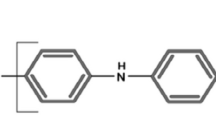Abstract
Compact high-efficiency ultraviolet solid-state light sources1—such as light-emitting diodes (LEDs) and laser diodes—are of considerable technological interest as alternatives to large, toxic, low-efficiency gas lasers and mercury lamps. Microelectronic fabrication technologies and the environmental sciences both require light sources with shorter emission wavelengths: the former for improved resolution in photolithography and the latter for sensors that can detect minute hazardous particles. In addition, ultraviolet solid-state light sources are also attracting attention for potential applications in high-density optical data storage, biomedical research, water and air purification, and sterilization. Wide-bandgap materials, such as diamond2 and III–V nitride semiconductors (GaN, AlGaN and AlN; refs 3–10), are potential materials for ultraviolet LEDs and laser diodes, but suffer from difficulties in controlling electrical conduction. Here we report the successful control of both n-type and p-type doping in aluminium nitride (AlN), which has a very wide direct bandgap11 of 6 eV. This doping strategy allows us to develop an AlN PIN (p-type/intrinsic/n-type) homojunction LED with an emission wavelength of 210 nm, which is the shortest reported to date for any kind of LED. The emission is attributed to an exciton transition, and represents an important step towards achieving exciton-related light-emitting devices as well as replacing gas light sources with solid-state light sources.



Similar content being viewed by others
References
Schubert, E. F. & Kim, J. K. Solid-state light sources getting smart. Science 308, 1274–1278 (2005)
Koizumi, S., Watanabe, K., Hasegawa, M. & Kanda, H. Ultraviolet emission from a diamond p-n junction. Science 292, 1899–1901 (2001)
Akasaki, I. & Amano, H. Crystal growth and conductivity control of group III nitride semiconductors and their application to short wavelength light emitters. Jpn. J. Appl. Phys. 36, 5393–5408 (1997)
Pankove, J. I., Miller, E. A., Richman, D. & Berkeyheiser, J. E. Electroluminescence in GaN. J. Lumin. 4, 63–66 (1971)
Nakamura, S. et al. Superbright green InGaN SQW structure LEDs. Jpn. J. Appl. Phys. 34, L1332–L1335 (1995)
Ponce, F. A. & Bour, D. P. Nitride-based semiconductors for blue and green light-emitting devices. Nature 386, 351–359 (1997)
Han, J. et al. AlGaN/GaN quantum well ultraviolet light emitting diodes. Appl. Phys. Lett. 73, 1688–1690 (1998)
Nishida, T. & Kobayashi, N. 346 nm emission from AlGaN multi-quantum-well light emitting diode. Phys. Status Solidi A 176, 45–48 (1999)
Adivarahan, V. et al. 250 nm AlGaN light-emitting diodes. Appl. Phys. Lett. 85, 2175–2177 (2004)
Hirayama, H. Quaternary InAlGaN-based high efficiency ultraviolet light-emitting diodes. J. Appl. Phys. 97, 091101 (2005)
Li, J. et al. Band structure and fundamental optical transitions in wurtzite AlN. Appl. Phys. Lett. 83, 5163–5165 (2003)
Taniyasu, Y., Kasu, M. & Kobayashi, N. Intentional control of n-type conduction for Si-doped AlN and AlxGa1-xN (0.42 ≤ x < 1). Appl. Phys. Lett. 81, 1255–1257 (2002)
Taniyasu, Y., Kasu, M. & Makimoto, T. Electrical conduction properties of n-type Si-doped AlN with high electron mobility (> 100 cm2 V-1 s-1). Appl. Phys. Lett. 85, 4672–4674 (2004)
Ng, H. M. et al. The role of dislocation scattering in n-type GaN films. Appl. Phys. Lett. 73, 821–823 (1998)
Nakamura, S., Mukai, T., Senoh, M. & Iwasa, N. Thermal annealing effects on p-type Mg-doped GaN films. Jpn. J. Appl. Phys. 31, L139–L142 (1992)
Nam, K. B. et al. Mg acceptor level in AlN probed by deep ultraviolet photoluminescence. Appl. Phys. Lett. 83, 878–880 (2003)
Mireles, F. & Ulloa, S. E. Acceptor binding energies in GaN and AlN. Phys. Rev. B 58, 3879–3887 (1998)
Taniyasu, Y., Kasu, M., Kumakura, K., Makimoto, T. & Kobayashi, N. High electron concentrations in Si-doped AlN/AlGaN superlattices with high average Al content of 80%. Phys. Status Solidi A 200, 40–43 (2003)
Kuokstis, E. et al. Near-band-edge photoluminescence of wurtzite-type AlN. Appl. Phys. Lett. 81, 2755–2757 (2002)
Sze, S. M. Physics of Semiconductor Devices 2nd edn 63–132 (Wiley, New York, 1981)
Amano, H. et al. Defect and stress control of AlGaN for fabrication of high performance UV light emitters. Phys. Status Solidi A 201, 2679–2685 (2001)
Rojo, J. C. et al. Report on the growth of bulk aluminium nitride and subsequent substrate preparation. J. Cryst. Growth 231, 317–321 (2001)
Edgar, J. H. Properties of Group III Nitrides 129–134 (INSPEC, London, 1994)
Acknowledgements
We thank M. Prinz, K. Thonke and R. Sauer at the University of Ulm in Germany for measurement of free-exciton energy in our AlN by cathodoluminescence and photoreflectance. We are also grateful to K. Kumakura for discussions, and K. Torimitsu and H. Takayanagi for their encouragement. Author Contributions Y.T. performed experimental work and data analysis. All authors discussed results.
Author information
Authors and Affiliations
Corresponding author
Ethics declarations
Competing interests
Reprints and permissions information is available at npg.nature.com/reprintsandpermissions. The authors declare no competing financial interests.
Rights and permissions
About this article
Cite this article
Taniyasu, Y., Kasu, M. & Makimoto, T. An aluminium nitride light-emitting diode with a wavelength of 210 nanometres. Nature 441, 325–328 (2006). https://doi.org/10.1038/nature04760
Received:
Accepted:
Issue Date:
DOI: https://doi.org/10.1038/nature04760
- Springer Nature Limited
This article is cited by
-
Studies on semiconductor-based long-period fiber grating structure to realize memory application: an alternate of CD, DVD, and B-ray storage devices
Journal of Optics (2024)
-
Transfer-free chemical vapor deposition graphene for nitride epitaxy: challenges, current status and future outlook
Science China Chemistry (2024)
-
Group-III nitride heteroepitaxial films approaching bulk-class quality
Nature Materials (2023)
-
Interfacial interaction and intense interfacial ultraviolet light emission at an incoherent interface
Nature Communications (2023)
-
Light-emitting diode (LED) research: A bibliometric analysis during 2003–2018
Quality & Quantity (2023)





